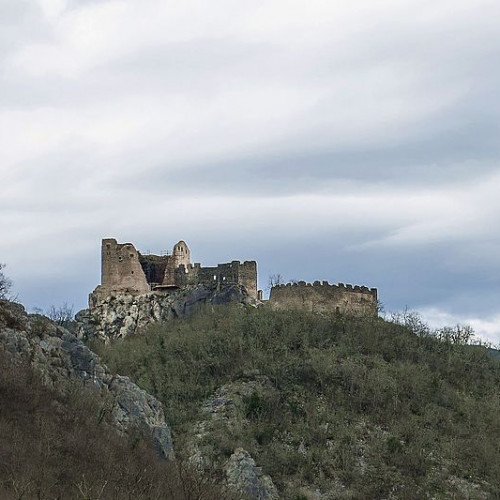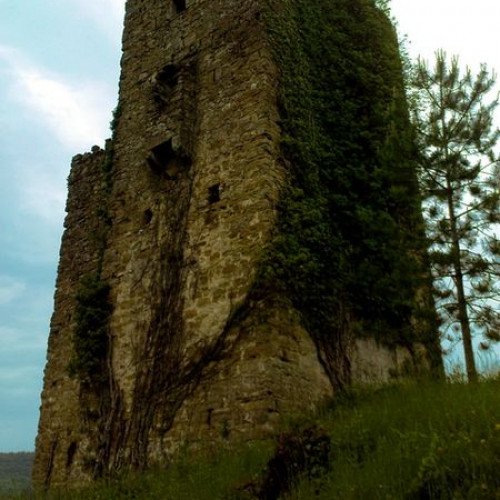Castles of "Croatia" PIETRAPELOSA vs POSERT CASTLE

PIETRAPELOSA
Pietrapelosa (Croatian: Kostel, Kaštel, Kosmati grad, Kosmati Kostel, Kosmati Kaštel) is a castle in the Croatian part of Istria, now ruined. In the medieval period a family took their name from the castle. "Pietrapelosa" comes from the Italian words meaning "hairy stone" after the moss that has always grown on the walls of the castle. It is one of the best-preserved of the Istrian castles. Pietrapelosa is a few kilometers west of Buzet in a strategic location at the head of the Bračana valley. It is first mentioned in a document of 965 A.D. in a deed recording its gift by Rodaold, patriarch of Aquileia to the bishopric of Poreč. In the 13th century it was given to a family of German knights who assumed the name of the castle, "de Pietrapelosa". The castle was the seat of the Aquileian lieutenant governor of Istria. The Venetian commander Taddeo d'Este conquered the castle and abolished the secular rule of the patriarchs of Aquileia in 1421, with Istria being divided between the Republic of Venice and the Habsburg County of Pazin. The Venetian Council of Ten granted the castle to the nobleman Nicolò Gravisi in 1440, giving him the title if Marquis of Pietrapelosa. He renovated the castle for use as a summer residence. In 1635 a fire destroyed the interior of the castle, but it was restored and inhabited until the 18th century. The Gravis family owned the castle until the final abolition of the feudal system in 1869. They were the only aristocratic family in Koper to own such an estate.
Statistics for this Xoptio

POSERT CASTLE
Posert Castle (Posrt, Italian: Possert), also known as Šabec (Schabez) and St. Martin, is a ruined fortress near the road between Paz and Šušnjevica, in municipality of Cerovlje, in Istria, Croatia. The ruins of the castle depending on the name are dating back to the 11th century (St. Martin), or 16th century (Šabec), while by archeological evidence to the second half of the 14th century. The castle was vastly devastated in the Uskok War (1615–17). Between 2009 and 2014 the castle was restored. Nearby the castle there is also a small Church of St. Martin from 1367. Until now the castle was considered as the same fortress with different names, of St. Martin, Posert and Šabec, which in several occasions were separately mentioned and built, but that wasn't confirmed by archaeological research. It is still unknown whether they were at the same or different locations. The castle was associated with Castrum Sancti Martini from the 11th century, mentioned in the grant by Ulric II to Aquileia patriarchs. In the second half of 14th century St. Martin belonged to the Pazin county. Its lords were Gutenegg family, and when in 1436 became part of the Moysevich (Moise, Mojsijević) family estate, that area was named Posshart, while suburb as Possert. In the 16th century, Juraj (or Giorgio) Barbo, of the Barbo family who inherited Moysevich estate and Kožljak in 1529, allegedly built new fortress Šabec. Between 1614 and 1617, during the Venice-Uskok war, both St. Martin (or Possert) and Šabec area were occupied and destroyed. As Šabec was in ruins and abandoned, Juraj decided to build a new castle Belaj south of it. According to archeological excavations the castle is dated to the second half of the 14th century. This indicates that the castle was possibly built by Counts of Gorizia who were the lords of the area until 1374, or by the Habsburg family who inherited their estates.